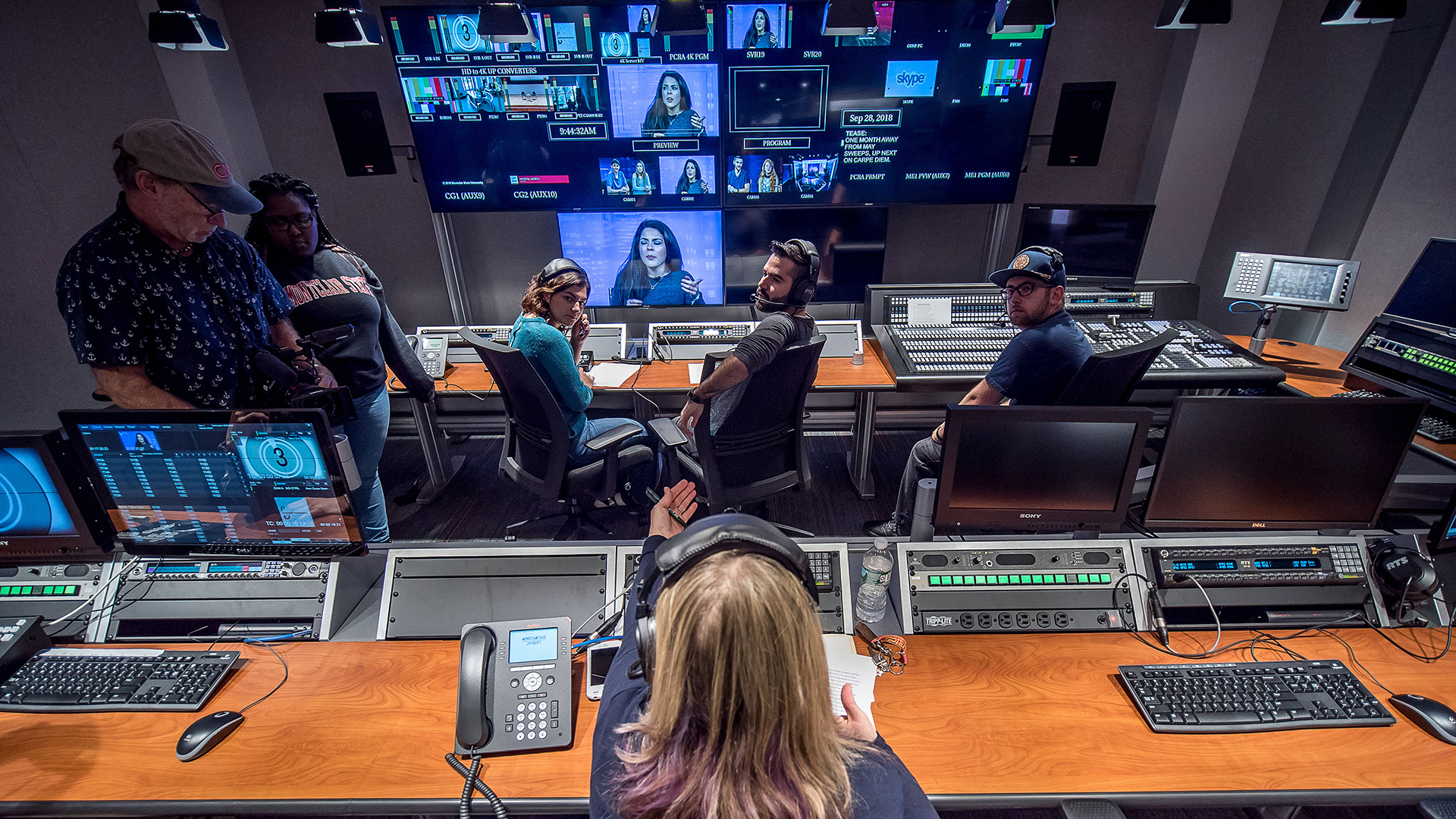
I edited a lot of minidisc in my day, and while I wouldn’t have wanted to edit together a complex half-hour feature, it was very simple to trim the heads or tails off a track or move tracks around. Although the process seems slow in comparison to editing a waveform on a computer, it was still a lot easier and less error-prone than editing reel-to-reel tape with a razor blade, as many stations were still doing in the early 90s. By the late 1990s most major radio networks and producers, including NPR and the BBC, were using minidisc recorders for field reporting.Īn especially useful feature of minidisc was the ability to edit right on the disc.
#Broadcast studio with tapedeck portable
Portable minidisc recorders were also smaller than most other portable recorders of the time, while offering better sound quality and durability than the ubiquitous cassette recorder.

Operating much like a tape deck, very little training was required for air staff to begin using them. A pro-level deck could be had for just around $1000 and the reusable discs cost just a couple of bucks. Storage costs easily went up from there, since a gigabyte hard drive storing a bit less than two hours of audio cost hundreds of dollars.īy comparison, minidisc offered stations an inexpensive way to digitally record programs from satellite, prerecorded shows, on-air spots or airchecks.
#Broadcast studio with tapedeck Pc
A decent PC or Mac-based digital audio workstation easily could set a station back five to ten grand. But back in the mid-90s digital computer-based audio was still a tricky and expensive proposition, and the recordable CD-R had yet to be released. It’s hard to remember a time when you couldn’t listen to an MP3 online or load up thousands of songs on a player the size of a wristwatch. One place where MD found a foothold was in radio.


Although Sony first boneheadedly marketed MD as an ultra-portable CD replacement, eventually the digital recording capacity of the medium won over. However, Sony has just announced that it will end production of their last portable minidisc walkman this September, nineteens years after introducing the format, and just under a year after ending production of the cassette walkman.įirst released by Sony in 1992, minidisc was the company’s second attempt to create a recordable digital audio device for consumers, after the release of digital audio tape (DAT) was complicated in the 1980s by the recording industry. After enjoying a brief period of mainstream popularity just prior to the introduction of the iPod, many people are probably surprised to learn that minidisc is actually still around now. Minidisc is an audio technology that never quite took off in the US the same way it did in Asia, and especially Japan.


 0 kommentar(er)
0 kommentar(er)
